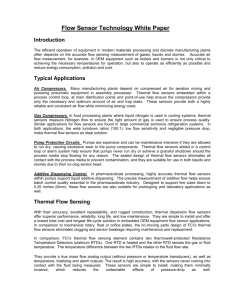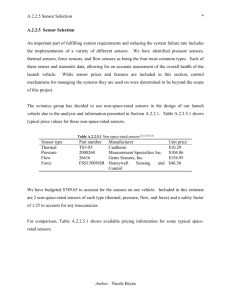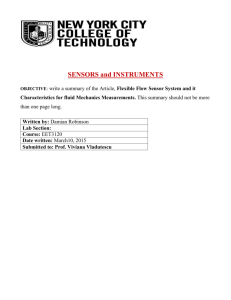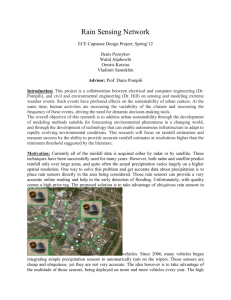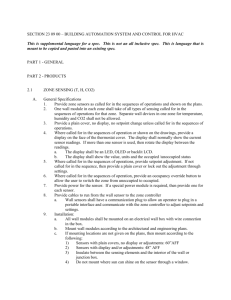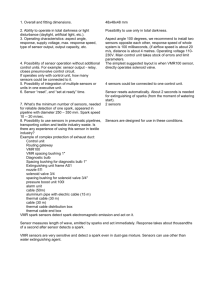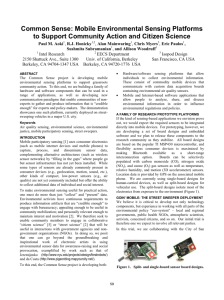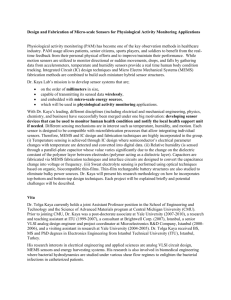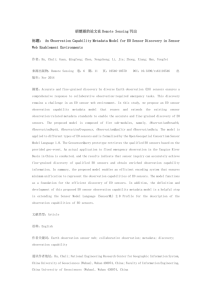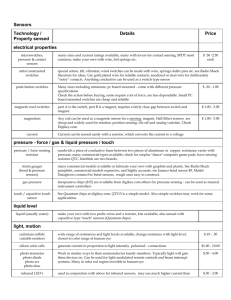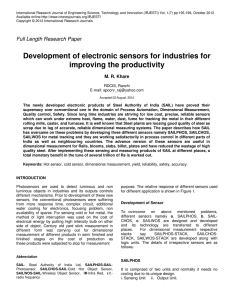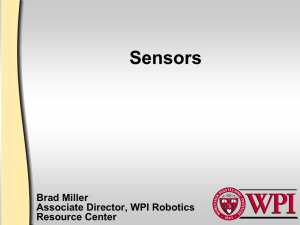Research Paper - City Tech OpenLab
advertisement
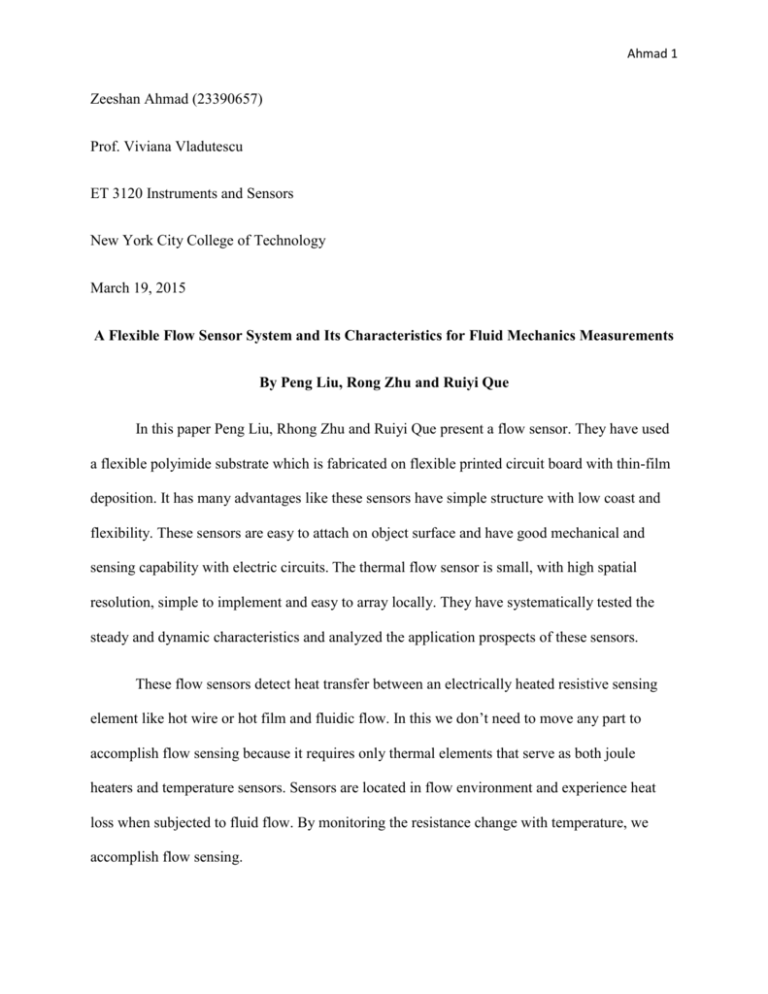
Ahmad 1 Zeeshan Ahmad (23390657) Prof. Viviana Vladutescu ET 3120 Instruments and Sensors New York City College of Technology March 19, 2015 A Flexible Flow Sensor System and Its Characteristics for Fluid Mechanics Measurements By Peng Liu, Rong Zhu and Ruiyi Que In this paper Peng Liu, Rhong Zhu and Ruiyi Que present a flow sensor. They have used a flexible polyimide substrate which is fabricated on flexible printed circuit board with thin-film deposition. It has many advantages like these sensors have simple structure with low coast and flexibility. These sensors are easy to attach on object surface and have good mechanical and sensing capability with electric circuits. The thermal flow sensor is small, with high spatial resolution, simple to implement and easy to array locally. They have systematically tested the steady and dynamic characteristics and analyzed the application prospects of these sensors. These flow sensors detect heat transfer between an electrically heated resistive sensing element like hot wire or hot film and fluidic flow. In this we don’t need to move any part to accomplish flow sensing because it requires only thermal elements that serve as both joule heaters and temperature sensors. Sensors are located in flow environment and experience heat loss when subjected to fluid flow. By monitoring the resistance change with temperature, we accomplish flow sensing. Ahmad 2 They have used polyimide as substrate because its thermal conductivity is low and it has good mechanical and chemical properties. Polyimide is also a standard material used for flexible printed circuit boards. By looking to stability and sensibility properties they have used Nickel, platinum and chromium as hotwire/hot film. Nickel is used as the main thermal material; pt is used as cover layer and chromium as a bonding layer between Nickel and the substrate for increasing adhesion of the sensing element. After fabrication the sensor is put in 200 °C for 1 hour in a vacuum environment and then passes 30mA current for 3 hours which eliminate its internal stress and increases the stability and temperature coefficient of resistance. Similarly under constant temperature they performed several experiments to increase the efficiency and effectiveness. The experimental performance of the sensor system under constant current are including noise density and electrical parameters like: flow rate change (0-15), angular sensitivity range (0-60 degree), temperature coefficient of resistance (2000ppm/degree C), inaccuracy (±3% F.S ), repeatability(±0.3% F.S), response time, zero adjustment, supply voltage (8VDC ± 10%), output signal (1.5V-4.5V), resolution (0.1 m/s) and power consumption (30mW). The application of sensors is limited to fluidic measurement in frequency e.g. flight parameters of measurements for a micro air vehicle. The sensors can be used in harsh and high loss situation due to its economical reason and sort production period. In some applications with high-integrated requirements, these hot film sensors are preferred to others since the conventional complicated lead bonding required in packaging of sensor have been simplified. In addition, sensor array system can be realized on the FPCB and mass-produced economically. So, these sensors have good mechanical characteristics, low cost, simple structure and flexibility, they are also easy to attach on object surfaces.




